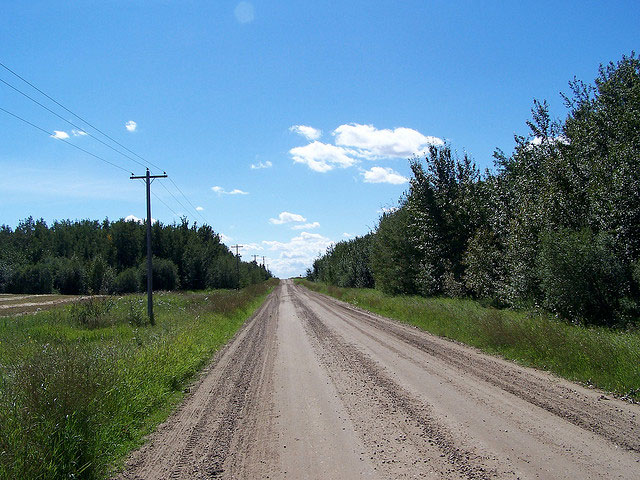In a previous article, we looked at the growing trend of converting paved to unpaved roads. Unpaving rural, low-volume asphalt roads has financial and other benefits that are driving local road agencies to take this seemingly odd – yet innovative – step.
What are the challenges to converting paved to unpaved roads? How does Midwest’s solution address all of these challenges while offering your agency the best investment for your road management dollars?
Resistance to UN-Paving Roads
The public (in particular, communities who are used to paved roads, even ones in bad condition) tends to have a very negative perception of gravel roads.
There are a few reasons for this. First is the perception that gravel roads are the lowest level of service provided. This view was exemplified in one comment on an article about this subject. The commenter stated, “Yes, let’s turn back into a developing country.” (This view might also lead some to believe that gravel roads would depress property values in their community.)
A second concern is dust. From reducing visibility and being a respiratory irritant, to damaging vehicles and the environment, dust is a very real problem for communities surrounding, and drivers using, rural roads.
Consider a statement in a handbook by the U.S. Environmental Protection Agency that describes what we call the “rule of one”:
“One car making one pass on one mile of dirt or gravel road one time each day for one year creates one ton of dust.”
(That means that a gravel road with an average daily traffic volume of just 100 cars can be assumed to be putting out 100 tons of dust per mile, per year.)
Confronting these issues through a public awareness campaign is crucial to the success of any conversion project. But what can you do and say to confront these concerns?
The Paved to Unpaved Roads Solution: The Costs of Gravel with the Strength of Pavement
Midwest has pioneered a solution that will both alleviate many of the stated concerns of your community and remove many of the negatives that you would face by converting a paved road to an unpaved one. It’s innovative in the industry, due in part to the extreme application experience our teams have, as well as to the decades we’ve spent refining how we manage dust at the molecular level.
Gravel roads deteriorate as the fines, or small dust particles, leave the road surface. Fines escape the road surface in several ways. Wind and moving traffic stir up particulate matter, allowing it to blow away. Heavy rains, excessive water from watering programs and certain chemicals applied for the purpose of dust control (such as chlorides) can wash fines out of the road. (Yes, this means that several methods currently used to control dust can still make the problem worse over time.)
As fines escape, the larger aggregate that makes up the road surface comes loose and can be dislodged by vehicle movement, excessive water, etc. This creates potholes, rutting and many other problems.
In other words, gravel roads can degrade much quicker than paved ones. And keeping them up requires regular grading and other maintenance activities, along with dust control.
To deal with this effectively, Midwest has developed multiple solutions to effectively manage the transition to unpaved. These include EcoPave, EK35, EnviroKleen and Soil Sement Engineered Formulas. These products work by controlling the fines on a molecular level, binding them together so that they can’t escape the road surface. This has two benefits: first, it keeps fines from being stirred up as dust. We have had huge success with this, often eliminating up to 95% of dust (along with over 90% of water that might have been previously used for dust control).
And second, it also stabilizes the road surface, making it more resistant to damage from vehicles and inclement weather. In fact, as more traffic travels over a road surface with our product applied to it, the road surface actually compacts and becomes stronger over time. It has a cumulative effect, including when you add more product periodically on a maintenance basis.
The effect is a road surface that maintains the strength and durability of a paved surface. Compared to most gravel roads (including those using ordinary dust control methods), it’s smoother to drive on, takes longer to break down, can handle more (and heavier) traffic, doesn’t leach harsh chemicals or dust particles into the environment and virtually eliminates all of the problems caused by dust. And it’s far more friendly on your road management budget.
Will You Join the UN-Paving Movement?
With Midwest as your road management partner, you can take this decision both to your local road agency and to your community. When you get buy-in to convert paved to unpaved roads, you will save your agency money while providing the benefits your community expects.
Reach out to Midwest today for more information.

